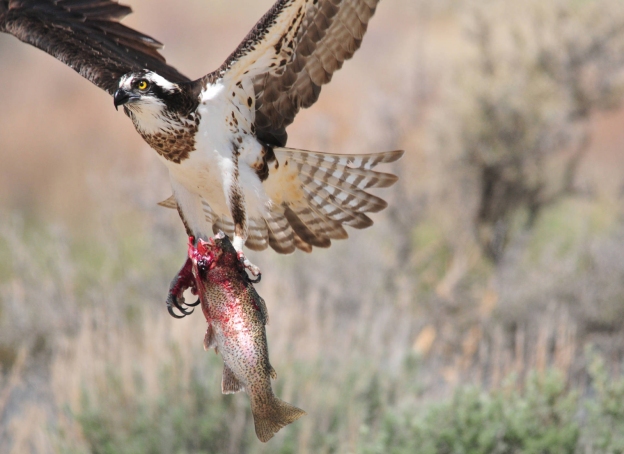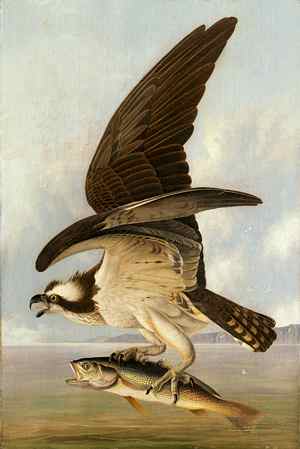
Photo by Bryan Stevens • An osprey perches in a tree along the Watauga River in Elizabethton, Tennessee.
The day after the yearly Autumnal Equinox, I felt change in the air. The birds felt likewise, I think, based on a wonderful stroll along the linear trail behind the McDonald’s in Erwin.
Normally, I’d be at my desk, but thanks to a power outage, I had some empty time on my schedule and decided to do some research for the bird column by checking out the status of local birds. The occasion also marked my first walk on these wonderful trails since we officially shifted into the fall season.
In the span of about 20 minutes, I observed a pair of ruddy ducks, an osprey, great blue heron, belted kingfisher, red-bellied woodpeckers, Eastern kingbird, Eastern wood-pewee, gray catbird, Tennessee warblers and a Cape May warbler that got so close I had to be content to watch the bird without use of binoculars.
I felt special to get to share the bird’s personal space. It was in some shrub with berries (privet?) but I wasn’t able to tell if it was eating berries or plucking bugs off the berries. I am sure I missed many warblers due to overcast viewing conditions, but the Cape May made up for those missing.

Early naturalist and artist John James Audubon painted this work of art featuring an osprey with a fish held in its talons.
I also think I had a couple of wild Mallards. The pair was so wary they didn’t strike me at all like typical mallards.
I was alerted to the presence of the osprey, which had apparently snagged a fish dinner from the ponds along the trail, when I heard the bird’s piercing whistles. Ospreys make this call when challenged by other ospreys or bald eagles, or when disturbed by human activity. My interest, which involved training my binoculars on the bird, sent the bird flying to a more distant perch. The osprey carried its fish meal with it. I had a chuckle thinking that perhaps the bird was ashamed of its small catch.
According to the website All About Birds, ospreys don’t dine exclusively on fish. These large raptors have also been documented feeding on other birds, snakes, voles, squirrels, muskrats and salamanders. Perhaps this angler’s also an opportunist.
Ospreys, also known by the common name of “fish hawk,” occur worldwide. Ospreys migrate through the region in spring and fall, making sightings more likely along some lakes and larger rivers. They are becoming more abundant and have also been reported nesting at some lakes and reservoirs in the region in recent summers.
I see ospreys even more often when I travel to South Carolina, where these medium-sized raptors are common along the coast and in wetlands.
Probably because of their shared preference for piscine prey and wetland habitats, ospreys often encounter bald eagles. Ospreys are considerably smaller than eagles, although they are slightly larger than a red-tailed hawk.
The osprey is a truly cosmopolitan bird, occurring on every continent except Antarctica.
The osprey is not technically an official state bird anywhere in the United States, but some unusual political drama occurred in Oregon in 2017 when a state senator attempted to replace Oregon’s official bird (Western meadowlark) with the osprey.
As reported on the website, oregonlive.com, both birds managed to attract ardent supporters. Eventually, a compromise was reached. The meadowlark remained Oregon’s state bird with a modified designation as “official state songbird.” In turn, the osprey received recognition as Oregon’s “official state raptor.”
Farther afield, the osprey has been designated the official bird of Södermanland, a province in Sweden.
In the 1960s and 1970s, ospreys suffered reproductive problems, as did bald eagles and peregrine falcon, as a result of toxic insecticides such as DDT. With the banning of DDT in many nations, the populations of all these birds has improved in recent decades.
The bird Americans know as osprey is technically the Western osprey. The genus Pandion includes only two osprey species — the Western osprey and the Eastern osprey, a bird that ranges across Australia and the island of Tasmania. The Eastern osprey can also be found in the Philippines, Indonesia and New Guinea.
The Elizabethton Bird Club will be offering bird walks every Saturday in October at Sycamore Shoals State Historic Park in Elizabethton. Walks begin at 8 a.m. from the parking lot at the park’s visitors center. Scheduled dates for these free bird walks are Oct. 2, Oct. 9, Oct. 16, Oct. 23 and Oct. 30. Many of the park’s trails meander along the Watauga River, which will provide excellent opportunities for observing migrating ospreys. In previous years, ospreys have been fairly common birds on these walks.
To share a sighting, make a comment or ask a question, send me an email at ahoodedwarbler@aol.com.






